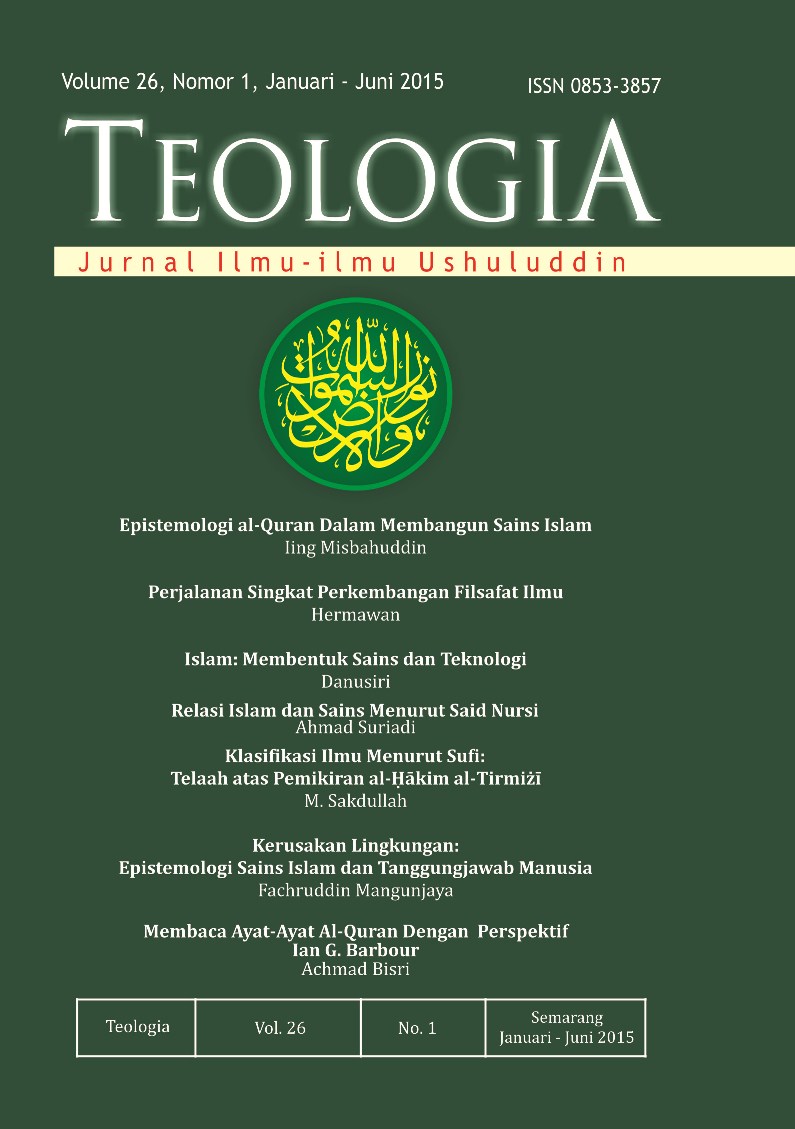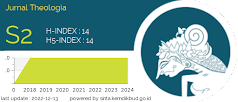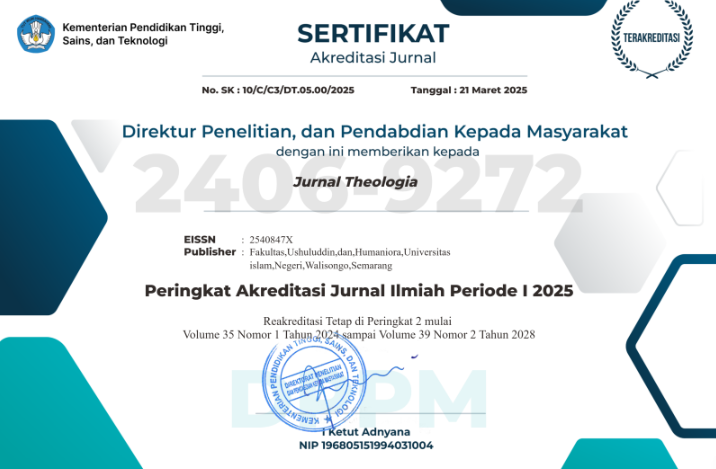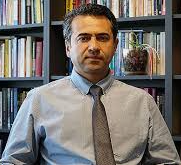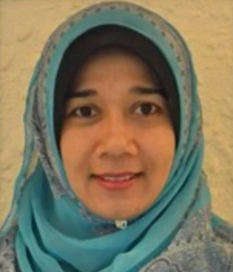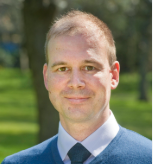MEMBACA AYAT-AYAT AL-QURAN DENGAN PERSPEKTIF IAN G. BARBOUR
DOI:
https://doi.org/10.21580/teo.2015.26.1.408Abstract
Asbtract: This aticle aims to understand the science verses of the Quran with Ian G. Barbour perspective. To elaborate the problem, I used the qualitative research with hermeneutic analysis. There are three findings important in the research. Firstly, regarding the relation between religion and science Ian G. Barbour divided four typologies: conflict, independence, integration, and dialogue. Secondly, regarding to the Quran verses in the line with Barbour’s thought to be found that some possibilities the science explain the scientific verses of the Quran. Thirdly, with Barbour’s perspective it was found the fact that relation the Qur’an and the science were conflict, independence, and integration. Abstrak: Artikel ini bertujuan memahami ayat-ayat sains dengan perspektif Ian G. Barbour. Untuk menjelaskan masalah ini, saya menggunakan jenis penelitian kualitatif dengan analisis hermeneutik. Adapun temuan yang diperoleh dari penelitian ini adalah: Pertama, dalam mengemukan hubungan antara agama dan sains, Ian G. Barbour membagi ke dalam empat tipologi (konflik, independen, integrasi, dan dialog). Ia melihat bahwa keempat tipologi ini dijumpai di kalangan saintis dan agamawan. Kedua, Berkaitan dengan ayat-ayat al-Quran yang senada dengan pemikiran Ian G. Barbour memang ditemukan adanya kemungkinan sains menjelaskan ayat-ayat ilmiah dalam al-Quran. Ketiga, dengan perspektif Ian G. Barbour, ditemukan fakta bahwa relasi al-Quran dan sains berada pada tipologi konflik, independen, dan integratif. Konflik terjadi ketika sains berbicara tentang alam yang terbebas dari campur tangan Tuhan; independensi terjadi ketika berkaitan dengan teori evolusi Darwin. Namun, integrasi terjadi juga ketika sains mampu memecahkan informasi-informasi ilmiah yang disajikan al-Quran. Keywords: al-Quran, sains, dialog, integrasi, independen.Downloads
References
Ali, Abdullah Yusuf, Qur’an: Terjemahan dan Tafsirnya, terj. Ali Audah, Jakarta: Pustaka Firdaus, 1994.
Ali, Maulana Muhammad, The Holy Qur’an: Arabic Text, English Translation, and Commentary, Lahore, Inc. U.S.A.: Ahmadiyah Anjuman Isha’at Islam, 1991.
Azra, Azyumardi, “Sambutan Rektor,” Prospektus UIN Syarif Hidayatullah Jakarta “Wawasan 2010” Leading Toward Research University, Jakarta: UIN Jakarta Press, 2006.
Bagir, Zaenal Abidin, “Pengantar” dalam Ian G. Barbour, Juru Bicara Tuhan, Antara Sans dan Agama, terj. E.R. Muhammad, Bandung: Mizan, 2002.
Barbour, Ian G., Menemukan Tuhan dalam Sains Kontemporer dan Agama, terj. Fransiskus Borgias M, Bandung: Mizan, 2005.
Drees, Willem B., Religion and Science in Context: A Guide to the Debates, London dan New York: Routledge, 2010.
Mahzar, Armahedi, Revolusi Integralisme Islam: Merumuskan Paradigma Sains dan Teknologi Islami, Bandung: Mizan, 2004.
Musa, M. Yusuf, Al-Quran dan Filsafat, Jakarta: Bulan Bintang, 1988.
Purwanto, Agus, Ayat-ayat Semesta: Sisi-sisi al-Quran yang Terlupakan, Bandung: Mizan, 2013.
Purwanto, Agus, Nalar Ayat-ayat Semesta: Menjadikan al-Quran sebagai Basis Konstruksi Ilmu Pengetahuan, Bandung: Mizan, 2012.
Shihab, M. Quraish, “Membumikan” al-Quran: Fungsi dan Peran Wahyu dalam Kehidupan Masyarakat, Bandung: Mizan, 1996.
Shihab, M. Quraish, Mukjizat al-Quran ditinjau dari Aspek Kebahasaan, Isyarat Ilmiah, dan Pemberitaan Gaib, Bandung: Mizan, 1997.
Shihab, M. Quraish, Tafsir al-Mishbāh: Pesan, Kesan dan Keserasian al-Qur’an, Vol. IV, Jakarta: Lentera Hati, 2001.
Syamsu, Nazwar, al-Qur’an Dasar Tanya Jawab Ilmiah, Jakarta: Ghalia Indonesia, t.th.
Syamsuddin, Ach. Maimun, Integrasi Mutlidimensi Agama dan Sains: Analisis Sains Islam al-Attas dan Mehdi Golshani, Yogyakarta: IRCiSoD, 2012.
Taslaman, Caner, Miracle of the Quran: Keajaiban al-Quran Mengungkap Penemuan-penemuan Ilmiah Modern, Bandung: Mizan, 2010.
Temple, Frederick, The Relations between Religion and Science: Eight Lectures Preached before the University of Oxford in the Year 1884 on the Foundation of the Late Rev. John Bampton, M.A, Cambridge: Cambridge University Press, 2009.
Waston, “Hubungan Sains dan Agama: Refleksi Filosofis atas Pemikiran Ian G. Barbour”, PROFETIKA: Jurnal Studi Islam, Vol. 15, No. 1, Juni 2014.
Zubaidi, Dialog antara Sains menurut Ian G. Barbour dengan Ayat-ayat al-Qur’an, Skripsi pada Fakultas Ushuluddin IAIN Walisongo Semarang, 2005.

